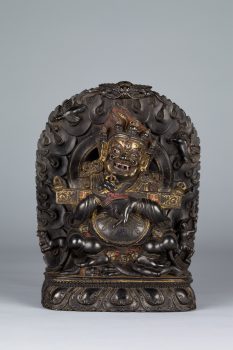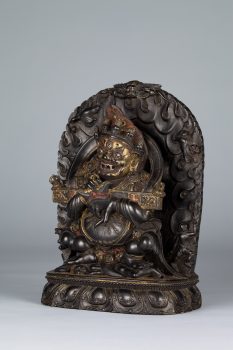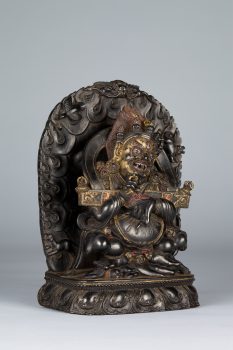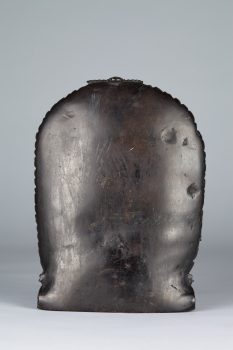Tibet
15th century
A skull cup is an attribute of tantric deities and is usually paired with a curved knife. It can symbolize a mind filled with the bliss of realizing the true nature of reality.
Tibet
15th century




Black stone is the most fitting material for depictions of Mahakala, the “Great Black One.” In this finely carved early Tibetan example the bulky wrathful deity is squatting on a lotus pedestal with wide petals. His head and body are massive and his legs extremely muscular. The magic wooden gong supported by both arms is extremely prominent. Behind the head a scarf forms an elegant bow, a feature that is characteristic of early depictions of wrathful deities with strong Nepalese connections. Its shape resonates well with the busy border of flames.
A virtuous feeling and deep respect toward an authentic teaching, teacher, or path. Buddhists believe that expansive study, analysis, and meditation are essential steps for cultivating a healthy and enduring devotion.
Prescribed practices that carry symbolic meaning and value within a specific tradition and are intended to attain a desired outcome. Rituals are usually done as part of a ceremony or regular routine.
Protectors of Buddhist teachings who destroy obstacles that impede the path to enlightenment. The more frightening and gruesome their appearance, the greater their power.
Today, Tibetans primarily inhabit the Tibetan Plateau, situated between the Himalayan mountain range and the Indian subcontinent to the west, Chinese cultural regions to the east, and Mongolian cultural regions to the northeast. During the 7th to 9th century, Tibetan rulers expanded their empire across Central Asia, and established Buddhism as the state religion.
Get the latest news and stories from the Rubin, plus occasional information on how to support our work.